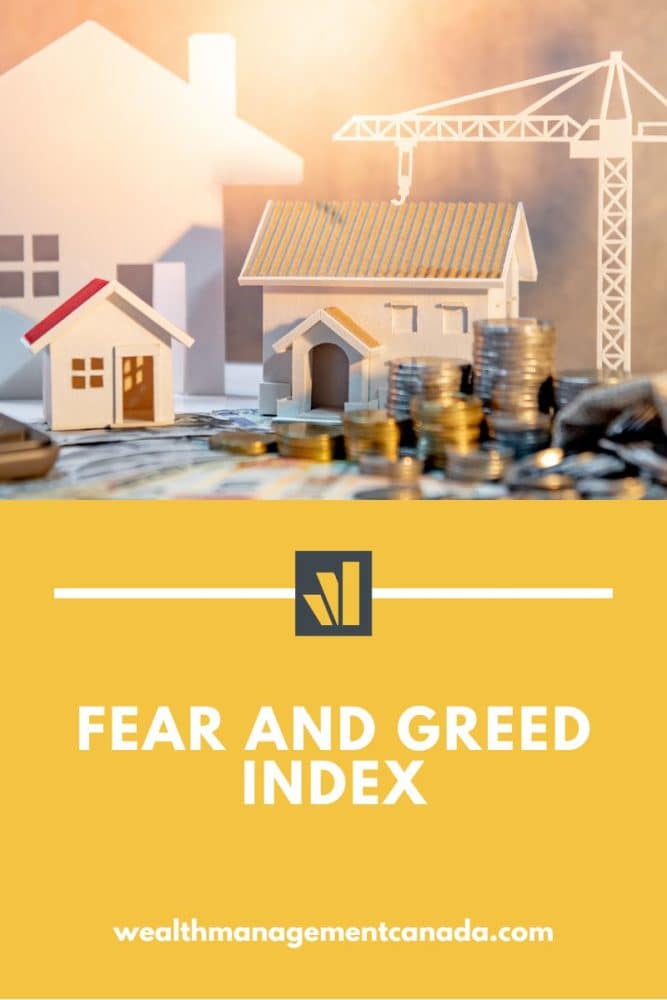Many experts believe two primary emotions tend to influence investors, fear and greed. These emotions indirectly control the stock market and other economies. This led to the creation of the Fear and Greed Index, a metric that measures how emotions influence markets. This index provides a unique perspective on the emotions and sentiments of markets around the world. It accurately predicts the effect of these emotions in real-time, helping investors make informed decisions.

Table of contents
If you thought investing was just about quantitative analysis, think again! Below, we consider what the Fear and Greed Index is, how it works, and whether it is reliable.
What is the Fear and Greed Index?
The Fear and Greed Index is an instrument that measures the emotions and feelings of investors within the stock market. It measures what exact emotion drives the market at any given time. The index is based on the idea that fear and greed drive investments on the stock exchange. Thus, whenever investors are afraid, share prices crash. But when they feel greedy, the opposite happens.
CNN founded the Fear and Greed Index and publishes it on the “CNN Business” platform. The organization tries to predict periodic investor sentiments on the stock market. The scale runs from zero through to a hundred. While zero represents extreme fear, a hundred signifies excessive greed. Through this index, CNN measures seven factors. These factors help them predict the level of fear or greed in the stock exchange market at any given time. They are:

START WORKING WITH A WEALTH MANAGER NOW
Stock Price Momentum
This measures the Standard & Poor (S&P) 500 Index against its 125-day average. A more robust performance shows greed, while a poor performance indicates fear.
Stock Price Strength
The Fear and Greed Index measures how many stocks hit a 52-week high on the stock exchange. Then, it compares it with the number that hit notable lows through 52 weeks. Where a greater number hit 52-week highs, there is a high level of greed in the market and vice versa.
Stock Price Breadth
The Index compares the volume of rising stocks against declining stocks. As with the others, higher levels of rising stocks show greed and lower levels show fear.
Ratio of Put Options to Call Options
This Index measures call options against put options. In other words, how many call options versus the number of put options traders purchased. Stock traders buying more call options show that they expect prices to go up — thereby indicating greed. But where they buy more put options, they expect prices to fall, indicating fear.
Demand for Junk Bonds
The Fear and Greed Index calculates the spread between the profit on junk and investment bonds. Junk bonds generally have high default risk. So, increasing demand for these bonds indicates greed in the market. But sometimes, there may be a wider spread between the yield on junk and investment bonds. In that case, fear dominates the market.
Market Volatility
CNN uses the Chicago Board Options Exchange (CBOE) Volatility Index (VIX). This index helps them to measure price fluctuations and market volatility. The standard monitoring period is 30 days. Where market volatility increases during that time, there is fear and vice versa.
Demand for Safety
The Fear and Greed Index measures the rate of returns on stocks versus bonds over 20 days. Stocks are generally riskier options than bonds. Whenever bonds perform better in the market, investors are afraid. But if bonds do better, there is greed in the market.

START WORKING WITH A WEALTH MANAGER NOW
How does the fear and greed index work?
This Fear and Greed Index compiles the seven indicators above. Then, it tracks how much they deviate from the average. It gives each factor a scale ranging from zero (0) to hundred (100). Then, it takes an average score based on market movements. For example, the scale reading 50 indicates that the market is neutral. But, where it reads higher, it means that there is a high level of greed in the market.
Is the Fear and Greed Index Reliable?
Over the years, the Fear and Greed Index has shown a historic level of accuracy. It has successfully predicted changes in the stock market. Plus, it is a reliable tool for day traders. These are traders playing different buy and sell positions over short timeframes, usually within the same day or week.
Some investors may feel the Fear and Greed Index is silly because it focuses on emotions over numbers. After all, much of the stock market and finance boils down to numbers. But at the same time, you cannot remove the human condition from anything, including business. For this reason, the Fear and Greed Index is a unique, reliable metric that can give investors a more holistic picture.
However, this should not be an investor’s only tool for making investment decisions. It is best combined with other prediction tools, especially those that are more quantitative in nature. That way, you can determine or predict market activity more accurately.
Related Reading: Is the Longest Bull Market Over?
What is the Best Crypto Fear and Greed Index?
Like the stock market, emotions control the concept of trading cryptocurrencies like Bitcoin and Ethereum. The Fear vs. Greed Bitcoin Index helps traders predict crypto market sentiments.
People often trade their coins when the market is red due to fear. But, when the dominant emotion among traders is greed, they gather more assets. This is where the Fear of Missing Out (FOMO) concept comes to play. It makes people buy all sorts of coins to avoid missing out on gains. In fact, much of the crypto economy has been built on the concept of FOMO, similar to a Ponzi scheme in many ways.
Alternative.me created a system to help people control their emotions in relation to crypto trading. This is called the Fear and Greed Bitcoin Index. It gathers data from different sources. Then, merges them into a scale measured from zero to hundred. Zero represents extreme fear, while a hundred translates to extreme greed. The five factors that influence the Index’s data are:
Market Volatility
The Fear and Greed Bitcoin Index measure the market volatility over a 30 to 90 day stretch. Whenever the volatility is high, there is fear in the market and vice versa.
Market Momentum
Using the same 30 to 90 day range, this Index compares “buy and sell” volumes on the trading market. If there are higher buy volumes, then there is greed in the market.
Social Media Interest
The index measures the level of interest social media has in cryptocurrency at a given time. It gauges the interactions and general sentiments. For example, Bitcoin is arguably the most searched crypto online. It also has many promotional hashtags on different social media platforms. Sometimes, there can be a high interaction over Bitcoin on social media. In that case, one can expect a greedy market.
Search Trends
The Fear and Greed Bitcoin Index gets part of its data from Google. It pulls search trend data relating to Bitcoin search queries. It then crunches these figures to make accurate predictions. For example, let’s say a keyword like “buy Bitcoin” shows high search volumes. This means there is possibly greed in the market. But, if keywords like “Bitcoin manipulation” trend, there is fear in the Bitcoin market.
Bitcoin Dominance
A sudden rise in Bitcoin dominance often indicates fear in the market. Thus, investors will typically forgo purchasing other coins. Instead, they will prefer to go for the safer option — Bitcoin. But suppose Bitcoin dominance drops. In that case, the market is greedy, and people are willing to risk other cryptocurrencies.
Yet, the question of whether the crypto Fear and Greed Index is effective still exists. The simple answer is that this index only measures and analyzes market sentiments. But, other factors control market performance apart from emotions. These are called technical factors. They are often a more reliable method of predicting market movements. So, the crypto Fear and Greed Index is good for day traders who play short-term buy and sell positions.
As a long-term investor, relying only on this Index may cause you to miss out on important price rallies. It is advisable to do private research and combine the crypto Fear and Greed Index with other tools. But ultimately when it comes to crypto, proceed at your own risk!

START WORKING WITH A WEALTH MANAGER NOW
When should I buy: the Fear and Greed Index
The best time to buy, based on the Fear and Greed Index, is when the market appears bearish. In other words, the market is fearful. Usually these are periods when the market is going down and unstimulated. If you exercise your higher emotions and don’t engage in the same fear as everyone else, you can buy investments at reasonable prices. Then, when the market becomes full of greed again, you can ride the bull market and profit.
What are the benefits of the Fear and Greed Index?
The Fear and Greed Index offers investors several benefits, some of which include:
Temperature Testing to Establish the Best Trading Times
The Fear and Greed Index is an effective tool for testing market temperatures. This is a necessary step before making investment decisions. Interested investors can leverage opportunities to buy or sell using this Index. Then, remember that the Index gets routine updates. It means that investors can make decisions with daily real-time estimates.
It Helps to Determine the Value of Stocks
This Index can help investors to establish which stocks are under or overvalued — one of the most crucial metrics. During extreme fear, investors rush to pull out their stocks. As a result, they sell the bulk of their assets at ridiculously low prices. The implication is that the market or stocks in question become undervalued.
It Recommends the Best Times for Entry and Exit
This Index presents an often accurate description of investor moods. This can then suggest the best times to buy or exit the market. For example, investors are typically emotional and make market decisions based on these emotions.
When there is extreme fear, prices are low, which is the best time to enter the market. But, it is the worst time to sell off stocks and exit the market because they won’t sell for much, typically periods of greed.
Understanding market sentiments is vital for investors looking to make a profit consistently. The Fear and Greed Index generally presents a technical analysis, but communicates an emotional aspect of markets. This analysis makes predicting market behaviors easier. As a rule of thumb, prices rise when greed levels are high in the market and fall when there is fear. However, note that the Fear and Greed Index is only one tool in an investment strategy. Investors are advised to combine it with other techniques for predicting market sentiments.
Read More: Passive Investing in Canada